Simon Tootell now owns a 1970 Scammell Trunker MkII that’s a familiar sight on the show circuit.
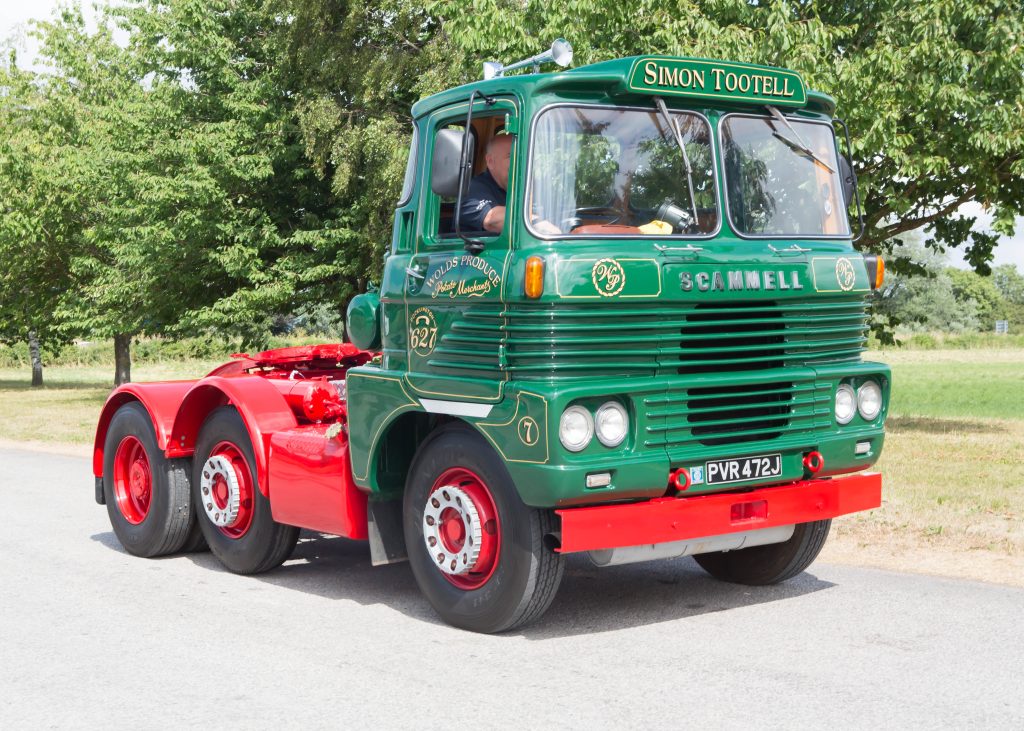
Although 1970 Scammell Trunker 2 has been around for a number of years it has recently moved to East Yorkshire after being bought by Simon Tootell.. Powered by a Rolls Royce 220 engine, it now resides not too far away from where it was started its working life. The Trunker was supplied by Yardley Limited of Green Hammerton, a village between Knaresborough and York in North Yorkshire.
Scammell new to Shell
As for the Scammell’s history, it could have been with Shell, later passing into the John Huddleston fleet. Originally a tractor unit, it appears that it was later converted to a recovery at some time. It was subsequently pressed back into service by John and was driven by Colin Rawson. Colin had been driving an Atkinson Borderer. But when that was replaced, a new vehicle had to be found. The answer was to use the Scammell Trunker II which was duly converted back to its original fifth wheel configuration. The process took four months, with John and Colin doing the restoration work. This included replacement brake chambers as well as new kingpins and bushes to the second steer. Colin’s brother Andrew was also an important part of the team, being responsible for the welding and fabrication work.
The Trunker was also seen at rallies, and was present at Llandudno and Carnforth in the 1990’s. It later passed through a number of owners hands, and managed to retain its distinctive green livery. “It had been in Winsford in Cheshire and with David Spain. His livery could still be seen on the headboard when Simon bought it from Woodbridge in Suffolk in 2016.
Simon’s favourite
The Scammell Trunker had always been one of Simon’s favourite vehicles. “My father used to run one when he was with A V Harrison of Finningley near Doncaster. They were agricultural and general haulage contractors.” Simon said. He was also influenced by the time that he spent around the lorries as a child. “As a young lad, I went in the cab with the drivers during the school holidays. We used to pick up vegetables from the farms and deliver them to the wholesale markets.”
Simon is still working in the produce industry with the Trunker now wearing Wolds Produce livery. “I started Wolds Produce in 2004 and run four Volvo FH4s. We grow and transport potatoes all over the country.”
Found on eBay
These childhood experiences were never forgotten by Simon, who one day found a Trunker that was for sale. “One Sunday morning in 2016 I was looking on eBay for no real reason whatsoever. I just happened to type in the word Scammell,” he said. The search resulted in Simon spotting PVR 472J. “It saw that it was for sale so I rang the owner up straight away,” he added.
Simon told the owner that he was interested in the vehicle. After a discussion Simon put a deposit down to show that he was serious about its purchase.
As the Trunker was located in Suffolk, Simon set of in a Volvo to have a look at it. He was quite happy with the condition of the Scammell. But just to make sure had taken along Mick Booth who was a Scammell fitter for Hoveringham. “Mick knew all about Scammells. He said that the Trunker was a good solid lorry and gave it the thumbs up.”
So with a deal being done, the Scammell was transported back to East Yorkshire. “I bought the Scammell in in May 2016 and had it tested when I got it home. But I did nothing with it until January 2017 when I started the restoration.”
Trunker Background
Simon’s Trunker is fitted with the traditional Michelotti-designed glassfibre cab, but that was not how the first Trunkers appeared. The term was first used by Scammell in 1960 on a double-drive six wheeled prototype for Shell Mex and BP. This was powered by a Gardner 150hp 6HLX engine. It carried the cab and drive axles of an Albion Reiver, but only a small number were made.
The Trunker came into its own when artic weight limits were raised from 24 tons to 32 tons gross in 1965. The associated regulations allowed 32tons gross weight for a four-axle vehicle. But but the 38ft outer axle spread this resulted in made it difficult to design such a vehicle within a 42ft 7in. overall length. It was soon recognised that a five-axle artic was needed, with Scammell introducing the Trunker. It was basically a 10ft.wheelbase Handyman four-wheel tractive unit with an additional steering axle mounted just in front of the driving axle. A 200bhp Leyland 680 engine as standard with a Gardner 6LX-150 being an option. It was later that the 200bhp Rolls Royce engine was fitted. Production of the Trunker lasted until the early 1970s when the Crusader came onto the scene.
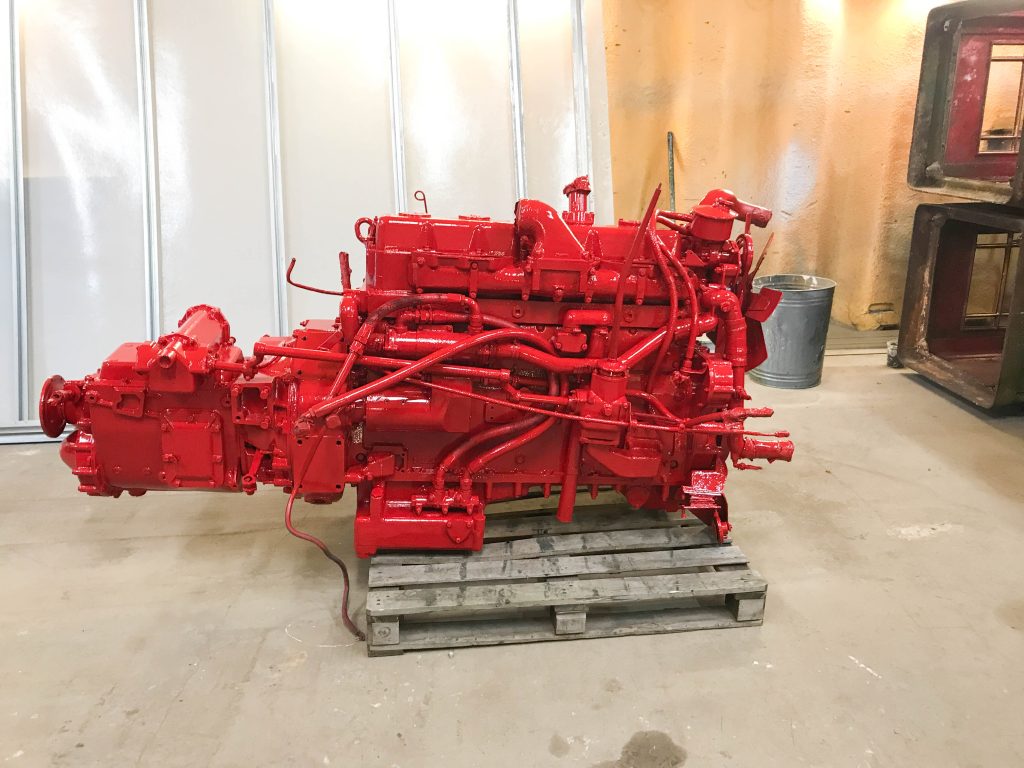
Light Restoration
Moving back to PVR472J, the first thing Simon did was couple it up to a trailer and gave it a run out. All seemed okay, so Simon took it to Britcom International of Market Weighton to get the cab painted. There was, of course, more work to do on the Scammell than Simon had anticipated. “Mick Booth was correct that the Trunker was good overall, but there were a few hidden problems.” “When they took the cab off, they looked at re-painting the chassis,” Simon explained.“But when they removed everything from the chassis they spotted some oil leaks.”
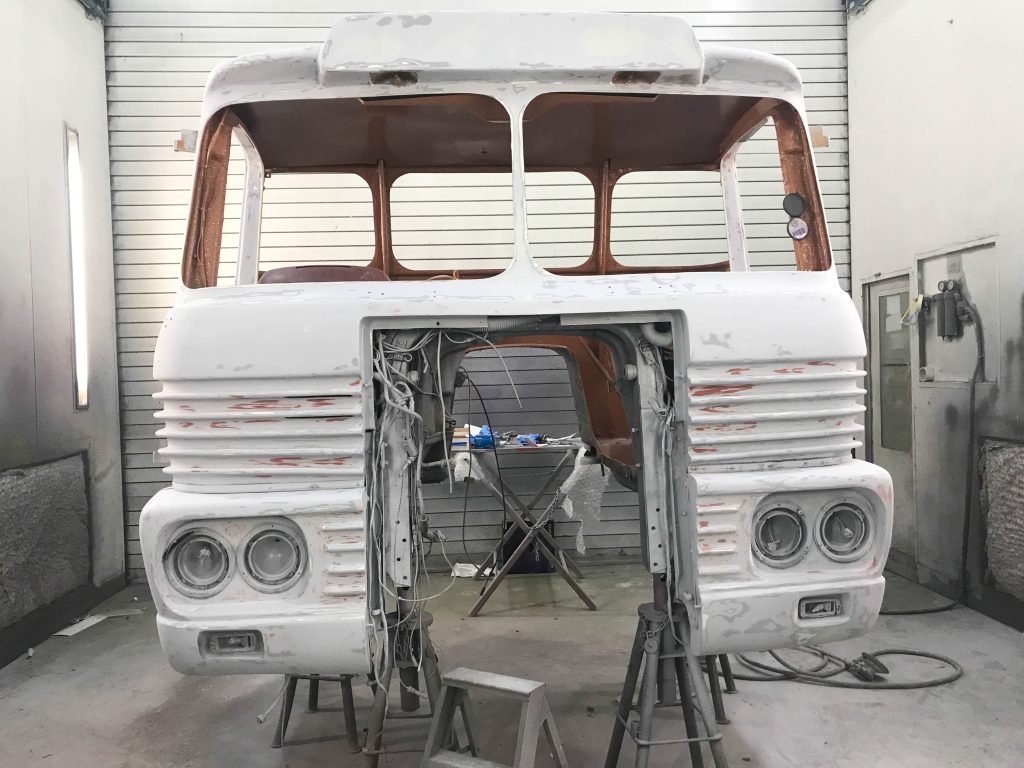
This resulted in the engine being removed, “I took it to Pete and Alan Jackson in Malton who had worked for S A Bell,” Simon continued, “Bells ran Scammells so they knew all about them.” The problem was traced back to the seals, so after they had been replaced the Rolls Royce engine was given a good service, all of which solved the problem.
The engine was then taken back to Britcom where a problem with the wiring loom came to light, “There were a number of wires that were not connected up,” Simon continued. It was another unexpected setback, “The result was that the old loom was stripped out with a new wiring loom being fitted,” Simon said. While this job was being completed, the opportunity to renew all of the air pipes was taken, “Another job that we did was to replace all of the rubber noise suppressors on the engine mountings,” Simon explained.
Shiny Scammell
And of course the cab was re-painted as had originally been planned, “They said that there were seven different layers of other people’s paint on it,” Simon said. The cab was completely rubbed down and smoothed out the cab surface before painting, with the signwriting being done by Mark Trousdale of Acomb Signs in York, in a day.
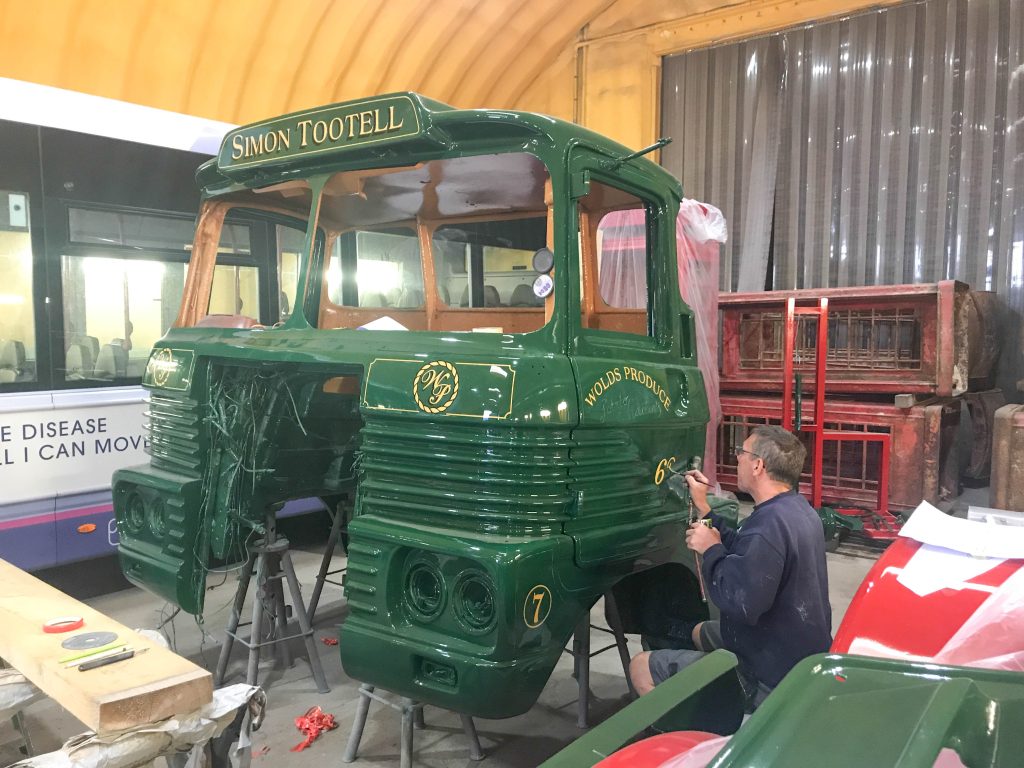
With the cab now having been painted, attention turned to adding the final touches, “We put new rubbers on all of the windows which have got a strip of metal in them to finish it off,” Simon said. The inside of the cab was also restored, “It was stripped down and painted with new head liners being fitted, while the seats were recovered.” To complete the interior, Simon acquired some original floor matting and had a traditional Scammell engine cover made.
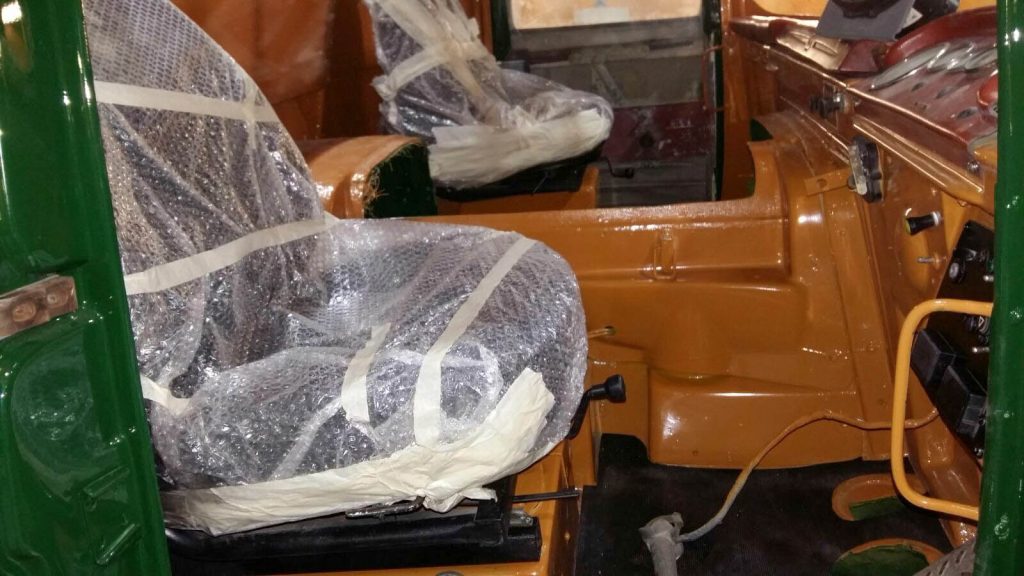
As a result of taking the Trunker for a re-paint, it turned out that the whole Scammell was re-furbished, “Everything works on it,” Simon confirmed, “The twin steer has a lift up middle axle that can be used as required.”
But there is more to come yet, “I have found an original 1976 Cranford bulk trailer,” Simon concluded, it will make a great combination.” The Trucker has subsequently been seen at events such as the East Coast Run, and he is looking to travel to events further away from his East Yorkshire base. This will give more people the opportunity to see his Scammell Trunker II on the road, a vehicle that is certainly worth a look.
To read more articles like this every month, subscribe to Classic & Vintage Commercials magazine by subscribing here. And find the latest news, exclusive looks and more at the CVC website here.

